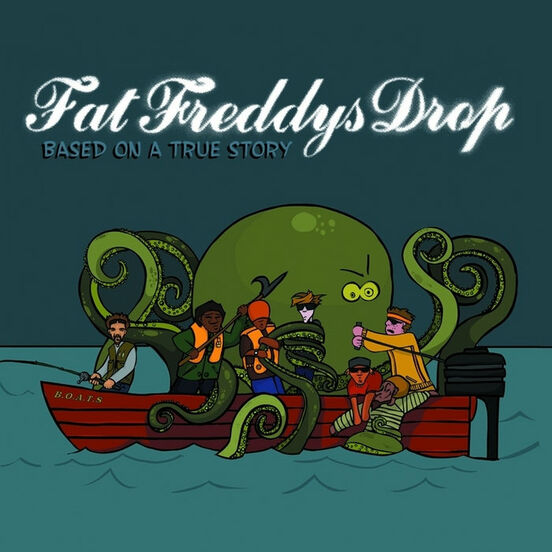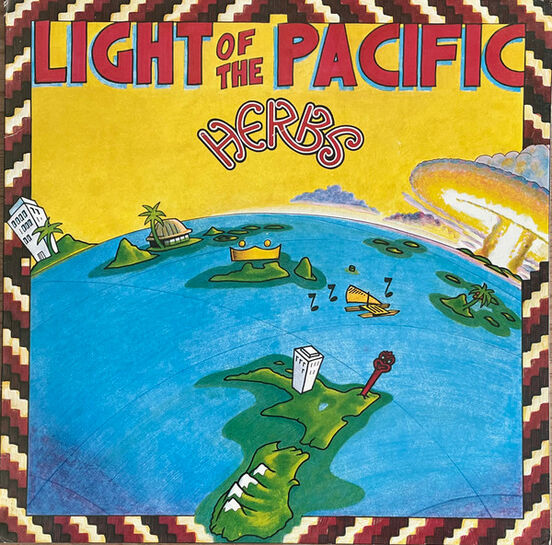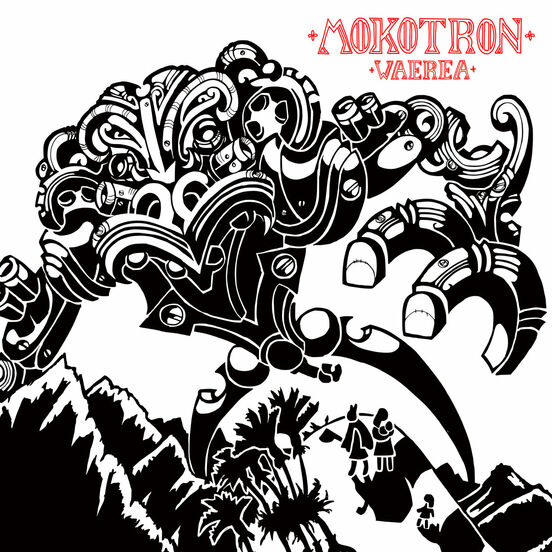-
Author
Alex Watene -
Date
26 Oct 2025
Essay
Investigation of Māori Record Covers with Alex Watene
Objectspace Gallery Assistant, Alex Watene, joined the team as part of a Ngāti Whātuā Ōrakei internship programme in 2023. Part of his mahi during the internship was research into album covers by Māori musicians, both historic and contemporary.
Alex’s investigation formed the foundation of a collection of records now displayed as part of Pohewa Pāhewa: Te Rūma. The exhibition of album covers, spanning 1951 to 2025, is a modest reflection of the extraordinary breadth of Māori music that has been produced over the past 75 years.
As part of Alex’s research, he was able to connect with some of the musicians and bands that feature in the display. He asked them for insights into the design of their album covers.
—
Fat Freddy’s Drop
Based on a True Story, 2005
The Drop
Artwork: Dallas Tamaira
Design: Michelle Healey & Component
Alex Watene: What is the kaupapa behind the album cover design and who did you work with?
Fat Freddys Drop: The bro Dallas aka Joe Dukie did the original illustrations, his partner Michelle then created the album design for the CD and vinyl. Same duo behind the HOPE 10” characters and design. We worked with long time collaborators Inject Design to get this packaged for printing and album was out the gate. Freddys was based by the sea in Lyall Bay during the making of the album, and Dallas was inspired by the stories of Ngake and Whātaitai, the two taniwha in Wellington Harbour and this led to the creation of 'Noodle' on the album. The photos on the album, behind the scenes, are by Amelia Hands Comb, partner of Tony Chang, Fat Freddys Drop trumpet maestro.
—
Herbs
Whats' Be Happen?, 1981
Warrior Records
Design: Herbs Management
Photography: Merita Mita, Bastion Point Eviction Day, May 25th 1978
Alex interviewed his Uncle Maurice Watene at his home and asked him about the kaupapa behind this legendary album cover.
AW: Uncle mentioned that he wasn’t in the band at the time but explained that the album was created in support of the Māori protest movement during the 1970s and 1980s. This movement focused on issues such as land rights, tikanga and culture. The photograph depicts the 1977–1978 protest against Robert Muldoon's proposal to develop Takaparawhau (Bastion Point) into an affluent residential neighbourhood. Uncle also noted that the album addressed international political issues, including the controversial 1980 Springboks tour which drew widespread criticism due to South Africa's apartheid policies.
Herbs
Light of the Pacific, 1983
Warrior Records
Design: Barry Linton
Uncle Maurice mentioned that The Light of the Pacific album was another design in reflection of a political movement – this time against nuclear bomb testing in the Pacific, particularly French Polynesia and surrounding islands. He talked about the impacts of these tests that meant seawater was contaminated with radiation, resulting in numerous birth complications and continuing to still impact those who were involved.
—
Mokotron
Waerea, 2024
Sunreturn
Artwork: James Paratii Lainchbury
Design: Tim Checkley
AW: I emailed the artist James Paratii Lainchbury who designed the album cover and asked him about Mokotron’s Waerea album cover.
James Lainchbury: Mokotron the "character" is something that Tiopira [McDowell] and I develop every new release. He is a kaitiaki figure, an ancient / future protector, emerging from te kore since the dawn of time. I love Japanese Mecha / Giant Robots and my art work is a fusion of whakario forms and that. If you look at my website you can see this has been a theme for many years.
The album concept is pretty simple. A hapu is moving around, searching for kainga hou, Mokotron is hovering above them, protecting their journey. Visible? maybe? Stretching out into the northern horizon in the distance you can see the two English frigates in a sea of blood heralding the incoming future colonization.
This theme was explored in more detail in the Ohaki music video by Simon Ward and myself.

Fat Freddy’s Drop, Based on a True Story, 2005

Herbs, Whats' Be Happen?, 1981

Herbs, Light of the Pacific, 1983

Mokotron, Waerea, 2024